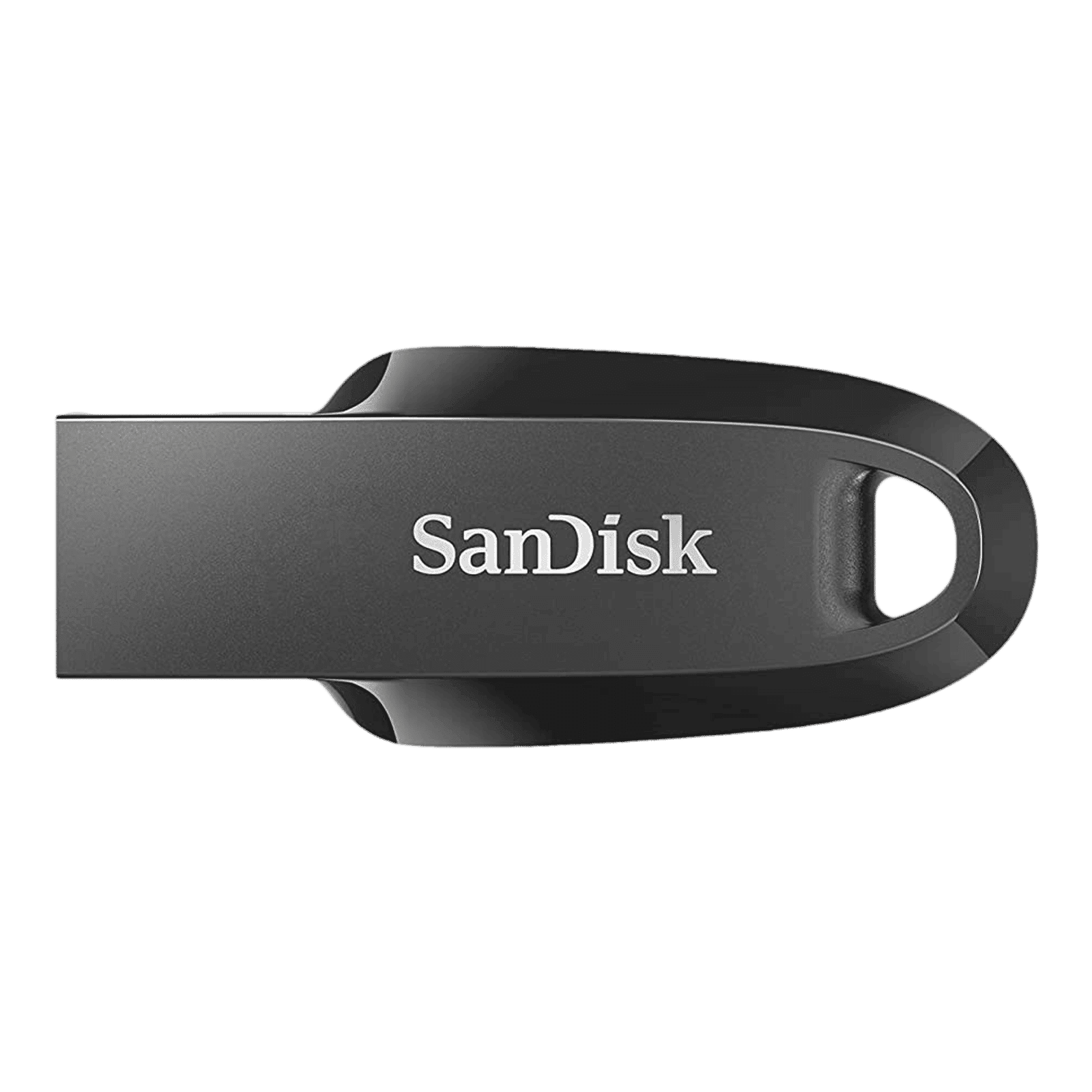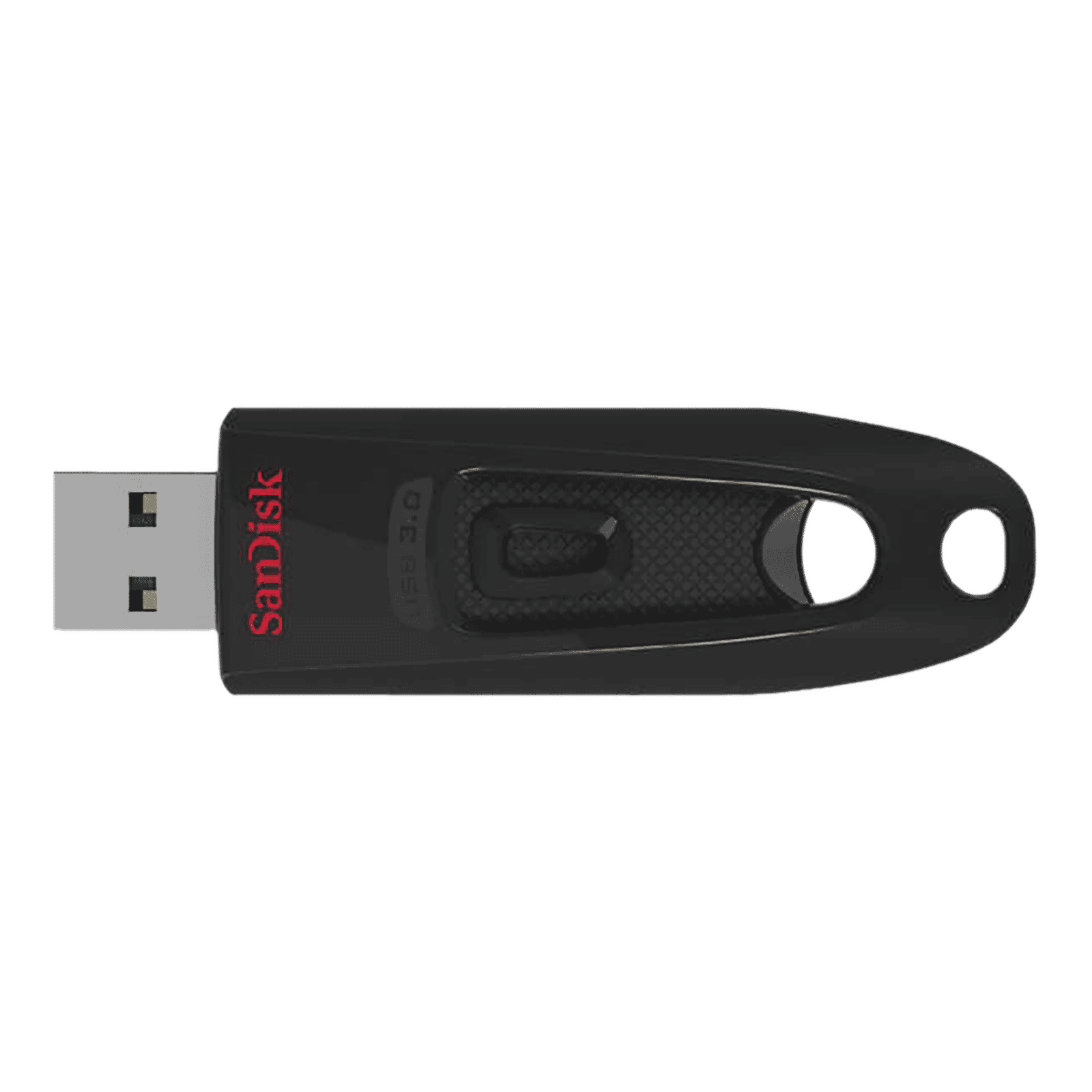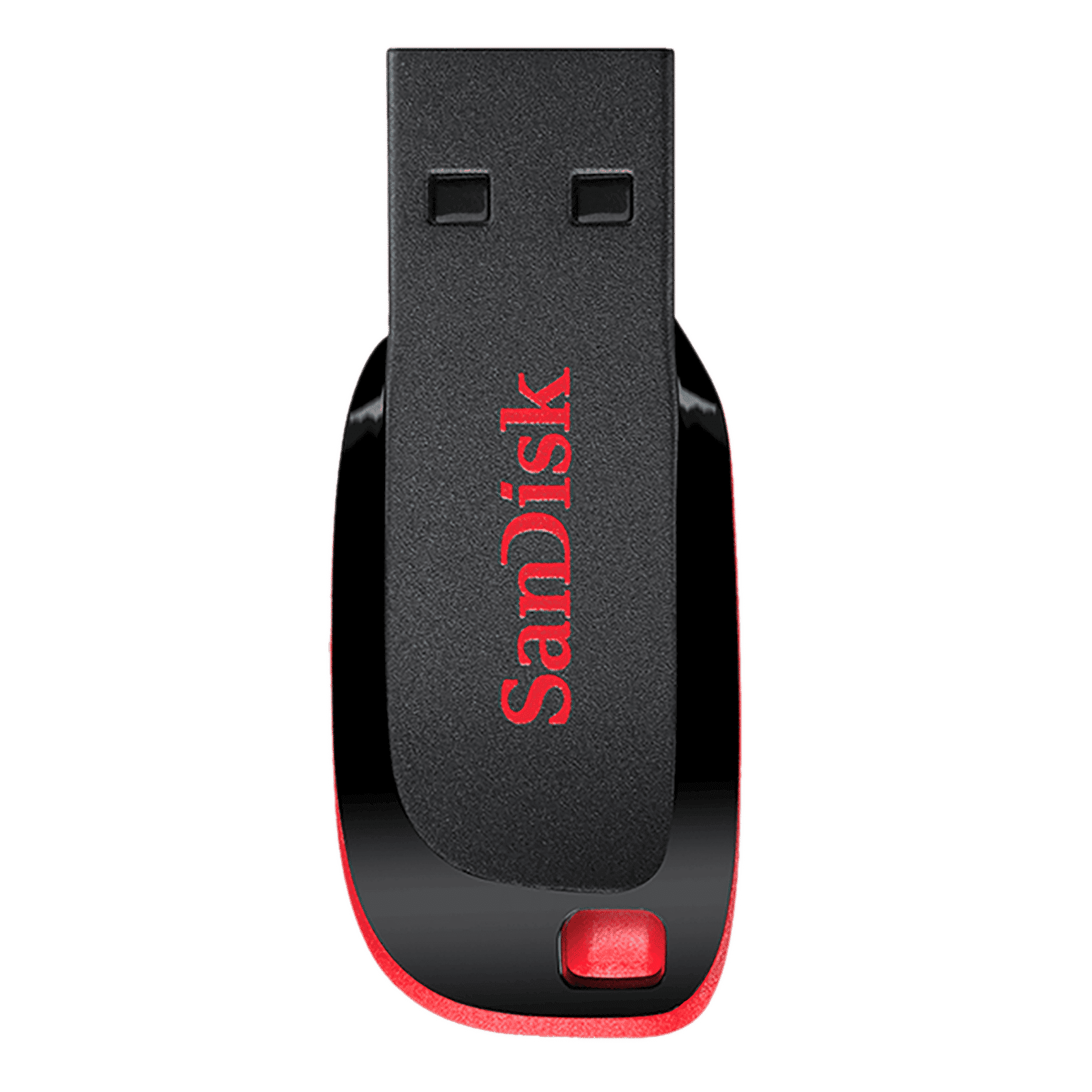%20(Presentation)%20(1600%20x%20600%20px)(74)-e74fc6a6-7421-4984-bb37-18620810bf2c.webp&w=3840&q=75)
Consumer Electronics
•05 min read

Buy SanDisk Ultra Curve 128GB USB (3.2) Pen Drive (Compact Design, Black ) online at best prices from Croma. Check product details, reviews & more. Shop now!
USB flash drives have become essential tools in our digital lives, offering a simple yet powerful way to transfer, store, and secure files. Whether you are just beginning your journey into tech or upgrading your digital habits, this guide offers clear, concise steps to help you make the most of your USB flash drive. By exploring everything from setting up your device to managing and protecting your data, you will gain the confidence needed to navigate this versatile technology.
A USB flash drive, commonly known as a thumb drive, is a compact, portable storage device that connects to your computer or other compatible devices via a USB port. Its primary features include high portability, various storage capacities, and universal compatibility with numerous systems. These convenient tools allow you to quickly transfer documents, photos, videos and other files without the need for cloud storage or emails.
The uses of a USB flash drive extend beyond simple file transfers. They play an important role in securely storing sensitive information, serving as a backup solution and even creating bootable drives for operating system installations. Their compact size makes them perfect for on-the-go use, whether you are a student, a professional or someone who appreciates hassle-free, reliable tech solutions.
Getting started is straightforward. First, locate the USB port on your computer or laptop. Once identified, carefully insert your USB flash drive into the port. On a Windows device, open File Explorer to see the newly added drive, while on a Mac, Finder will display it under the Devices section. With these initial steps, you are ready to begin transferring files and making the most of your flash drive.
While the basic operation remains the same across devices, slight variations exist. For Windows 10 users, File Explorer is your central hub; simply locate the drive under "This PC". Mac users will find their drive under Finder's Devices section. If you are using an Android device, particularly with an OTG adapter, the process is equally simple once the adapter is connected. This seamless utilisation across platforms emphasises the USB flash drive's versatility.
Moving files from your computer to a USB flash drive is a basic yet critical skill. Drag-and-drop functionality on both Windows and Mac systems makes this process intuitive. On a Windows system, right-click on the file, select the 'Send to' option, and pick your flash drive as the destination. For Mac users, the familiar copy and paste actions serve the same purpose, ensuring your files are safely transferred.

Buy SanDisk Ultra 32GB USB (3.0) Pen Drive (Portable Design, Black) online at best prices from Croma. Check product details, reviews & more. Shop now!
Keeping your USB flash drive organised is essential for quick access and efficient storage. One useful tip is to create dedicated folders and clearly name them based on the type of content—such as photos, documents, or media files. Such practices not only keep your data well-ordered but also maintain the drive’s performance by avoiding clutter. This is particularly important when using the drive as a backup storage device or for secure data transfer.
Formatting a USB flash drive may seem daunting, but it is vital for ensuring compatibility and optimal performance, especially before storing sensitive data. Formatting resets the drive and offers you the chance to select a file system suited to your device's operating system—be it FAT32, NTFS or exFAT. On Windows, right-click on the drive in File Explorer, select 'Format', and follow the prompts. Mac users can rely on Disk Utility for a similar process. This practice not only readies your drive for new data but also eliminates any existing errors.
To maintain the health and efficiency of your USB flash drive, it is best to avoid overloading it with too many files at one time. A well-organised drive running smoothly will allow for faster file transfers and easier navigation. Additionally, regular maintenance such as cleaning up unnecessary files and occasionally reformatting (after backing up crucial data) can significantly extend the lifespan of your device.
Safety in ejecting your USB drive is imperative to prevent data corruption. The operating systems provide a safe ejection feature to ensure that all processes are terminated before the drive is removed. Windows users can click on the 'Safely Remove Hardware' icon in the taskbar, while Mac users can either drag the drive icon to the Trash or right-click and choose the 'Eject' option. Adopting this routine prevents potential file loss and protects the longevity of the drive.
Pro Tip:
Always format your USB flash drive before using it for sensitive data to ensure compatibility and optimal performance. Choose the file system that matches your device’s operating system for seamless functionality.
Even with routine care, USB flash drives may sometimes run into issues such as not being recognised by the device or showing corrupted files. In such cases, first confirm that your USB port is functioning correctly. Try restarting your device or even connecting the flash drive to another system to rule out driver issues. Regular checks and ensuring your operating system is up-to-date often resolve these hiccups, allowing you to continue transferring your files with ease.
Data security is paramount, making it imperative to encrypt your USB flash drive if you plan to store sensitive information. Tools like BitLocker for Windows or third-party software such as VeraCrypt offer robust encryption measures. Encrypting your drive helps maintain data privacy and aligns with best practices in digital safety, ensuring that your valuable files are accessible only by authorised individuals.

Buy SanDisk Cruzer Blade 64GB USB (2.0) Pen Drive (High-Capacity Drive, Red) online at best prices from Croma. Check product details, reviews & more. Shop now!
Implementing regular backups via your USB drive is a straightforward way to secure your data against unexpected losses. Whether you are a professional handling important documents or a student with countless assignments, backing up files creates an additional layer of security. Moreover, some devices offer options to automate backup processes, streamlining the routine and giving you peace of mind during urgent times.
Using a USB flash drive also means that integrating efforts to earn rewards, such as NeuCoins on Tata Neu, can enhance your overall shopping and tech experience. NeuCoins rewards add an extra benefit every time you shop, driving smart decisions while enjoying convenience in your daily transactions. With Tata Neu’s seamless integration of trusted services and exclusive benefits, managing your tech needs becomes a rewarding journey in itself.
Before relying on your USB flash drive for critical applications, ensure that it is compatible with the devices you frequently use. This includes checking file systems and confirming that any required drivers are current. A proactive approach in maintaining your USB drive not only secures your data but also maximises your productivity. These steps further highlight why it’s crucial to stay informed and alert when utilising any digital storage device.
Understanding these various aspects enables you to leverage the true potential of your flash drive. By applying these straightforward techniques, you can streamline the process of transferring files, organising your data and ensuring that your information remains secure. In an age where digital data is invaluable, taking a proactive stance on managing your USB flash drive is a small yet significant step towards a smarter, more efficient digital lifestyle.
Insert the USB flash drive into your device’s USB port, access it via File Explorer (Windows) or Finder (Mac), and start transferring files by dragging and dropping.
On Windows, open File Explorer and locate the drive under 'This PC'. On a Mac, open Finder where the drive will appear under 'Devices'.
On Windows, click the 'Safely Remove Hardware' icon in the taskbar and select your drive. On a Mac, drag the USB drive icon to the Trash or right-click and choose 'Eject'.
Check if the USB port is functioning, update your device’s drivers, and try the drive on another device to rule out hardware issues.
Use tools like BitLocker for Windows or third-party software such as VeraCrypt to encrypt and password-protect your USB flash drive.
By familiarising yourself with these practical tips and techniques, you are now equipped to confidently manage and protect your digital files. Your USB flash drive is not just a tool; it is a companion in ensuring your data is secure, easily accessible and well-organised.